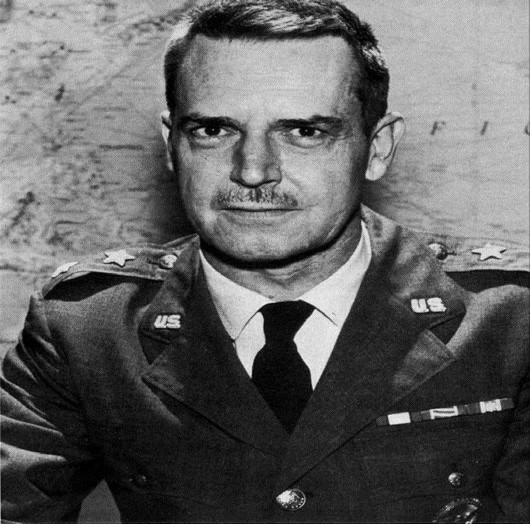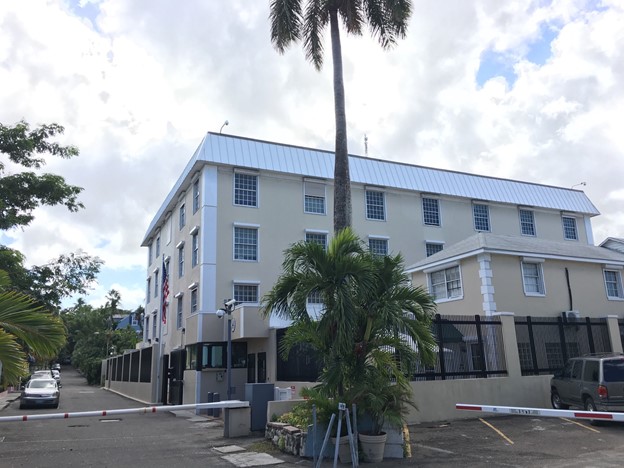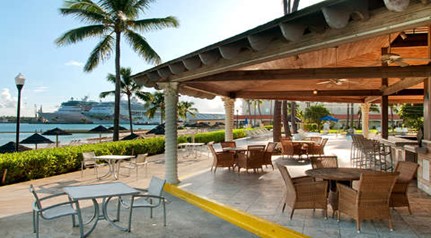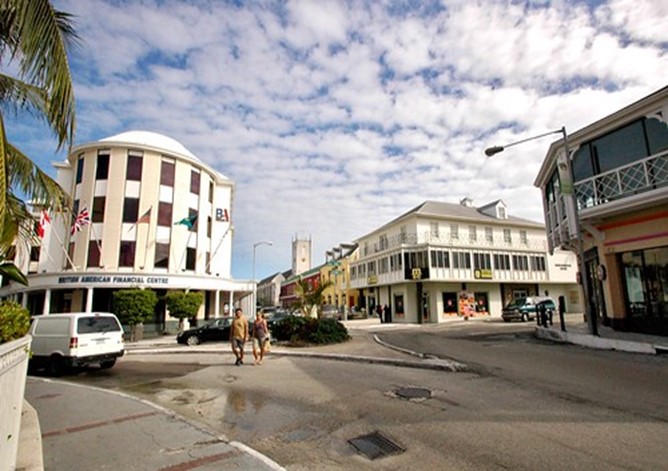

Author: Kent Moors, Ph.D.
In an earlier Classified Intelligence Brief Spy Tale entry, I mentioned Marina and I used to own property in the Bahamas, specifically outside Port Lucaya on Grand Bahama Island (“From a Meeting Outside Port Lucaya to a Standoff Outside Baku,” Classified Intelligence Brief, January 27, 2021).
The episode described there unfolded between very late 2006 and mid-2007. However, the Bahamas would figure into my operational life well before that, including a time to be described in this Tale in which I was skirting one of the darkest US ops ever envisioned.
This was JMMongoose, a highly restricted project to destabilize the Cuban regime (JM being the “digraph,” or two-letter initiate, for cryptonyms identifying Cuban projects, assets, and support beginning early in the 1960s). Buried in those operational parameters was an even more prized objective: the assassination of Cuban leader Fidel Castro.
This is about as controversial now as it was back then. The difference being that it occasionally surfaces in current discussions of intelligence agencies exceeding their briefs while then it was one of the most closely guarded secrets in the history of the CIA.
The Agency was not created to kill heads of state, even ones that we really did not like. It is also not what many of us would later sign up for putting our lives in harm’s way. But it is how much the intel purpose had morphed by the early 1960s.
This was well before my time. But as I shall summarize in a minute, the reverberations would be experienced for more than two decades thereafter.
JMMongoose had a definite genesis, high-powered sponsors, and a design authored by the “shadow prince” of American covert activities.
It was authorized by President John Kennedy on November 30, 1961 and actively supported by his brother Attorney General Robert Kennedy. However, the JM designation was already in existence by that time. And these earlier operations involved ops just before, during, and after the major disaster in Kennedy’s first year of office.
This was the failed Bay of Pigs invasion of Cuba that started on the evening of April 14, 1961. Codenamed JMPluto and primarily a CIA paramilitary operation utilizing Cuban exiles, it was actually approved by President Dwight Eisenhower via a National Security Council action on March 17, 1960. Nonetheless, Kennedy accepted public responsibility for the failure.
While training of the Cuban exiles had begun in April 1960 using locations in the Miami area and Panama, much of that was moved to a forward location encompassing a land facility (JMTrax) and an airbase (JMMadd), both in Guatemala.
The JMPluto force was met with superior Cuban military power awaiting its arrival and destroyed. The failure was a tragic textbook example of faulty planning, use of compromised internal intel, and lack of coordination (especially in the conflicting decisions first to provide and then to withhold American aircover for the invasion). Military decisionmakers had wanted nothing to do with it, what one called later “a ridiculous CIA parlor game.”
Kennedy took heavy political flack for the disaster and held agency leadership responsible. The intent to remove Castro’s regime, however, intensified inside The Beltway and JMMongoose emerged as the presidential response.
There is a direct line from this decision to the Cuban Missile Crisis barely a year later. Cuba also figures prominently in conspiracy theories surrounding the assassinations of both Kennedy brothers, with some versions claiming the killings were in reprisal for attempts against Castro under JMMongoose.
There has never been any tangible intel to support these claims. Nonetheless, they still surface with some unusual connections. For example, in Oliver Stone’s 1991 movie JFK, the fictitious character “X” played by Donald Sutherland recounts the story of a meeting with a sinister Department of Defense (DOD figure). A single frame of the film shows the name plate on the desk of that figure. It said General Edward Lansdale.
The basic design of JMMongoose was drawn up by Landsdale, one of the most covert of US operatives. A reading of the Pentagon Papers would reveal him to be the source of sinister cover ops during the early period of the Vietnam War. These included a poisoning of the Hanoi city war supply, use of highly contagious diseases, training of “death squads,” and close lethal support for the rising South Vietnamese leadership.
Ostensibly an Air Force officer, Lansdale retired as a major general (two star) in 1963. His curious career is pictured in one of the few official Pentagon photos taken shortly before his retirement. Despite rising to major general and having spent almost forty years in military intelligence and covert activity – he had started as an officer in the Office of Strategic Services (OSS) officer, the US covert effort in World War II, ending up at the end of the war as a major –the picture below illustrates his “shadow world” career. Lansdale retired with only three “overt” battle ribbons.


Landsdale successfully directed the defeat of the Huk communist insurgency in the Philippines and personally directed the campaign of Ramon Magsaysay, who became Philippine president in 1953.
A resourceful practitioner of cultural and psychological warfare, he utilized indigenous superstition against the Huk with an approach I admit to employing years later in Vietnam. To limit Huk ability to recruit outlying villages, Lansdale employed a traditional fear harbored by the Tagalog (the ethnic people from the central region of Luzon, whose language by the same name is the second tongue of the Philippines).
This involved a vampire demon from local folklore called an Aswang (its Vietnamese equivalent is the Ma Cà Rồng). A few Huks were hung upside down with blood drained and villagers would want nothing to do with the insurgents.
Following the Philippine campaign, CIA director Allen Dulles enticed Landsdale to replicate his success in Vietnam. What transpired were some of the most brutal episodes in the history of the war.
Lansdale was nominally the DOD Deputy Assistant Secretary and later Assistant Secretary for Special Operations from 1957 through 1963 (and his “official” retirement). It is in the latter portion of this period that he came to be the architect of JMMongoose.
The operation had aspects that would have been rejected even by a way-out Hollywood scriptwriter. These included some outlandish ways to kill Castro (exploding conch shells salted into lagoons he favored for skindiving) or subjecting him to ridicule (a chemically treated wet suit that would cause all his hair to fall out).
On at least one occasion, a more direct method was attempted. A long-range sniper rifle with a sophisticated sight was smuggled onto the island and a local asset would actually get a shot off. He missed and the guy disappeared (along with the expensive piece of government hardware).
Subsequent to his retirement from the Air Force, Landsdale again ended up back in Vietnam, this time as a “special minister” at the US embassy in Saigon from 1965 to 1968. His responsibilities were never clear, and Department of State (DOS) antipathy to the CIA and what was often derisively termed “spook craft” was openly expressed. Whatever he was doing there, the DOS had neither sponsored it nor wanted to know what it really was.
I never met the man. He was gone from Saigon before I got there late in 1970. For that matter, despite my slot in the DOS Bureau of Intelligence and Research (INR) Office of Intelligence Coordination (OIC), I was in the field carrying out the assignment I described in an earlier Spy Tale (“A Giving of Accounts … from Massachusetts to Vietnam,” Classified Intelligence Brief, February 17, 2021) and was not at the embassy (or for that matter anywhere in Saigon or at the military headquarters in Bien Hoa outside the capital).
However, there was one aftermath of Landsdale’s last sojourn to Vietnam that would linger like a bad smell. While never officially acknowledged, it was common knowledge that the mess was the creation of “the dark prince.”
Project Phoenix (PP)/ Phượng Hoàng was a combined American-South Vietnamese Army (ARVN) program to sever the local rural connection with the insurgents. It began in 1968, with the US involvement essentially over by the end of 1971, but overlapping with other operations. PP was primarily directed against the VCI (Viet Cong Infrastructure)—political and support underground in South Vietnam. The operation was supposed to involve the pacification and control of villages used by the VC as bases of operation.
It was a fiasco almost from the get-go. Paramilitary teams established quickly become little more than instruments for getting even with local heads or families with whom South Vietnamese politicians and military officers had ongoing disputes. Rather than pacification, it morphed into a bloodbath.
PP was administered on the US side by the CIA and the agency leadership at the station in Saigon badly bungled it. At some point in this Spy Tale series, I will talk more about the misdeeds of these folks. They were singularly responsible for the deaths of people I knew.
In response to the debacle, and for the only time in its history, INR (which usually provides intel for the Secretary of State, ambassadors, and other embassy officials) became a tasked agency. This meant INR received and acted upon presidential covert and clandestine findings.
Some operations were redirected by Washington from the PRU (Provincial Reconnaissance Units). These were recruited by CIA and became the action arm of the PP operation. Specific counterintelligence (CI) operations were transferred from PP to an ad hoc operational unit within OIC. It was under the aegis of this change in assignment that I was recruited for my first taste of active field intel measures.
Belief was strong that VC had thoroughly infiltrated the PRU and was using PP as a means further to destabilize the situation. Of course, the ARVN was also settling old scores. By the end of 1972, 81,740 “neutralizations” (i.e., deaths) and 26,369 incarcerations were confirmed. A bloody disaster.
Lansdale set this in motion and then left. But his impact would remain.
Which finally brings me to the op I want to comment upon in this Spy Tale.
By 1984, my responsibilities would upon occasion take me to the Caribbean. KGB and later SVR (the Russian post-USSR foreign intel agency) continued to man networks throughout the islands, ostensibly administered from Cuba.
It is in this period that I found myself on New Providence Island (the location of Nassau, the Bahamian capital) on more than one occasion. Over a decade later, Marina and I would start vacationing there on our own time and subsequently bought a property almost three hundred miles north on Grand Bahama. By the mid-1980s, Nassau and Freeport were among my regional op sites.
This was still CI (as I have often remarked in past Tales, my primary slot remained counterbalancing Russian and related intel activities). But the focus had expanded to what the KGB and later the SVR was continuing from webs created years earlier.
There was (and is) a CIA station in the embassy in Nassau. But it is sparsely manned with most of the ops run accomplished by personnel moved in TDY (i.e., temporary assignment). The duty was certainly pleasant enough. Plenty of sun, surf, and rum.


When in Nassau, I would usually take a room at a famous hotel. Since 1989 called the British Colonial Hilton, it was still called the Sheraton British Colonial when I frequented it. It became well known for having two Sean Connery Bond films (Thunderball and Never Say Never Again) filmed there. Located at One Bay Street, the beginning of the main waterside avenue and tourist strip, it was tailor made for intrigue and the occasional unpublicized activity.


Photo: onthetrackof007.com
There was an outside bar there that would figure in several memorable ops. The Patio Bar at the Colonial abuts the wharf they built for Fatima Blush to waterski up to in Never Say Never Again. It became so well known that the management kept it after the movie shoot was over.




Much intel business was conducted here, not only by our side. For a location that had so little genuine direct espionage, Nassau was a major crossing point for much else that was happening in the Caribbean.
On this occasion, I was dispatched to a larger than usual team overseeing the transfer of an asset (foreign national spying for us). One of the other three officers had been serving as the asset’s operations officer (the fellow who ran him and to whom the asset reported); the second was in charge of the Operations Support Element (OSE – the element responsible for all support surrounding an asset); the third was the new asset officer contact.
I was there to assess KGB and their other allied intel interest. Matters did not go well from the outset. This was supposed to be a final hand off with all details having previously been settled elsewhere. But other moving parts emerged.
I had been following KGB activity surrounding activity in and out of the Caribbean in general and the Bahamas in particular as one of the inevitable corollary assignments to my main areas of responsibility. Much of this involved Western Hemisphere smuggling and money laundering. Interest piqued when banking channels I knew to convey Russian op funding into Europe started using a private client bank in this Nassau building, literally kitty corner across the street from the Colonial:


Photo, 2007 flickr.com
An enhanced KGB presence was identified on the island, although we had received no other supporting intel on any specific activity by the Russians.
The asset in question was a Bahamian medical doctor who had offices in Nassau and Freeport, a separate residence (and choice harbor dock) on Exuma, and frequently traveled to Havana where he also had a successful practice. Included in his Cuban patients were relatives of high-placed officers in both the Dirección General de Inteligencia (DGI, The Cuban National Intelligence Agency) and the military command.
There had been some concerns over the security and integrity of intel sourced from the asset with corresponding discussion that he may have been turned or compromised. Among other matters, that resulted in a somewhat larger agency contingent involved in the changeover than usual. For example, I had at other times covered the handover with fewer personnel or alone (see “Spending a Dreary Christmas in Hamburg,” Classified Intelligence Brief, July 28, 2021 and “Duping an Agent’s Tale in Ҫeşme,” Classified Intelligence Brief, February 10, 2021)
The time came for the meeting at the Patio Bar. The asset did not show. We waited for the backup meeting time. No show then either. Within 24 hours, his body was found in a small boat adrift offshore.
A subsequent visit to his medical office in Nassau found it in disarray. Figured prominently on his desk was an envelope addressed to “Peter,” the field code name for his operations officer. Inside was the following message: “Felicitaciones del Jaguar” (“Compliments of the Jaguar”). Jaguars are among the few successful indigenous predators of the mongoose.
Lansdale was dead by this time as was JMMongoose. But his creation lived on in the acrimony issuing forth from Cuba.


Dr. Kent Moors
This is an installment of Classified Intelligence Brief, your guide to what’s really happening behind the headlines… and how to profit from it. Dr. Kent Moors served the United States for 30 years as one of the most highly decorated intelligence operatives alive today (including THREE Presidential commendations).
After moving through the inner circles of royalty, oligarchs, billionaires, and the uber-rich, he discovered some of the most important secrets regarding finance, geo-politics, and business. As a result, he built one of the most impressive rolodexes in the world. His insights and network of contacts took him from a Vietnam veteran to becoming one of the globe’s most sought after consultants, with clients including six of the largest energy companies and the United States government.
Now, Dr. Moors is sharing his proprietary research every week…knowledge filtered through his decades as an internationally recognized professor and scholar, intelligence operative, business consultant, investor, and geo-political “troubleshooter.” This publication is designed to give you an insider’s view of what is really happening on the geo-political stage.
You can sign up for FREE to Classified Intelligence Brief and begin receiving insights from Dr. Moors and his team immediately.
Just click here – https://classifiedintelligencebrief.com/







